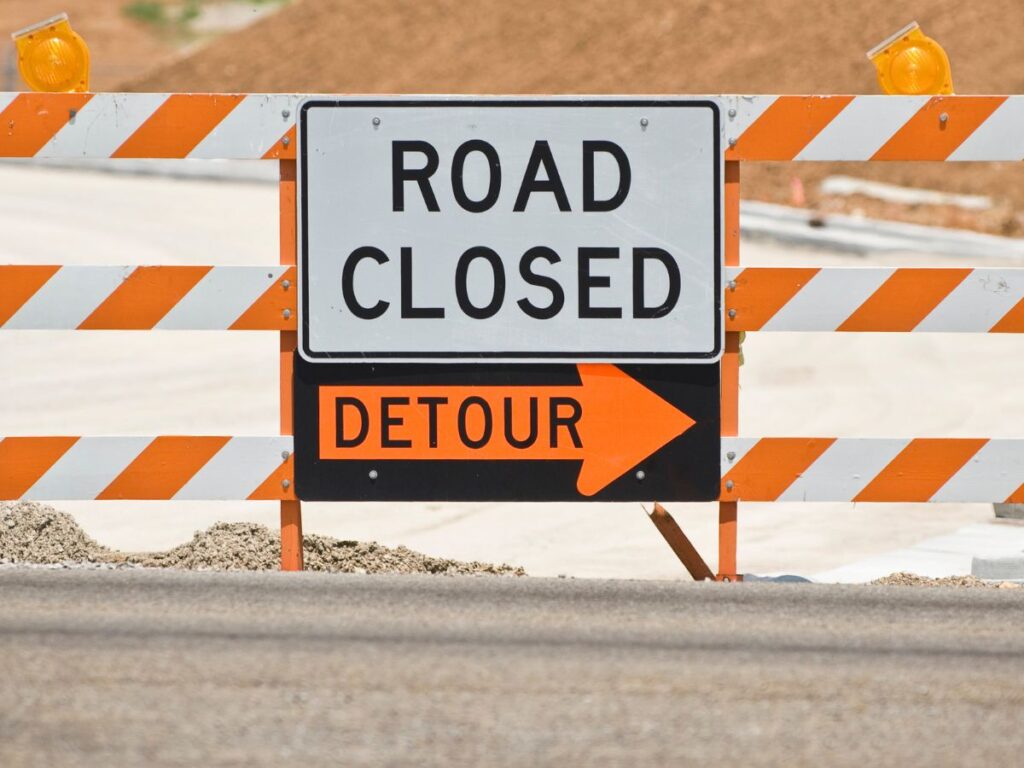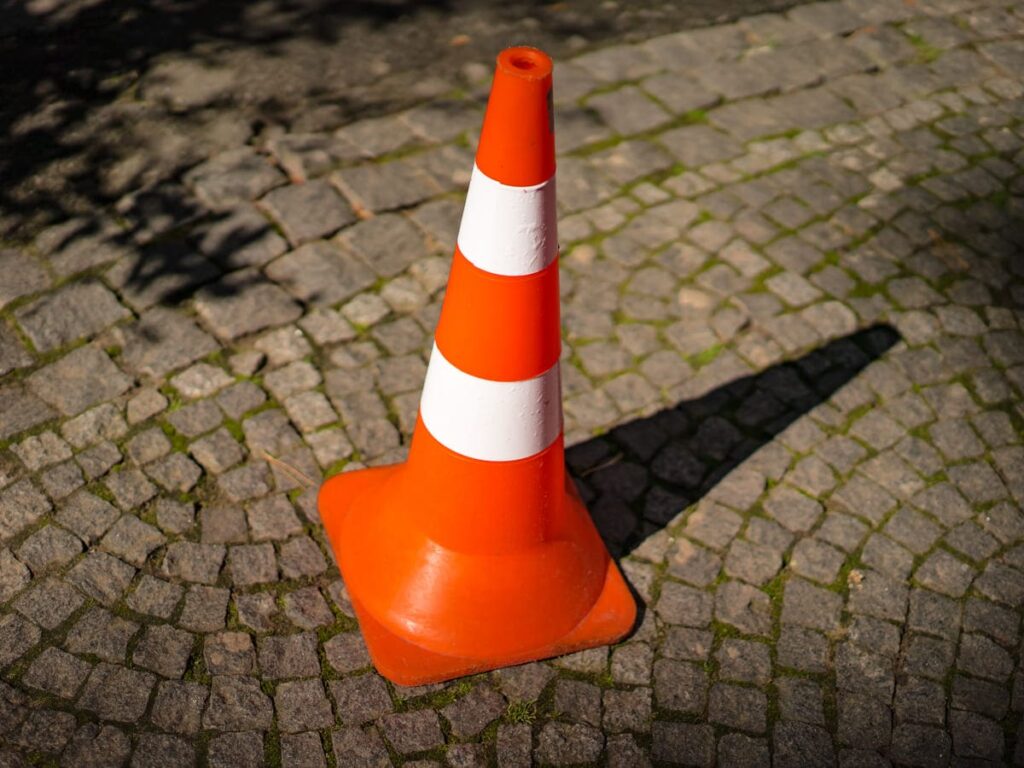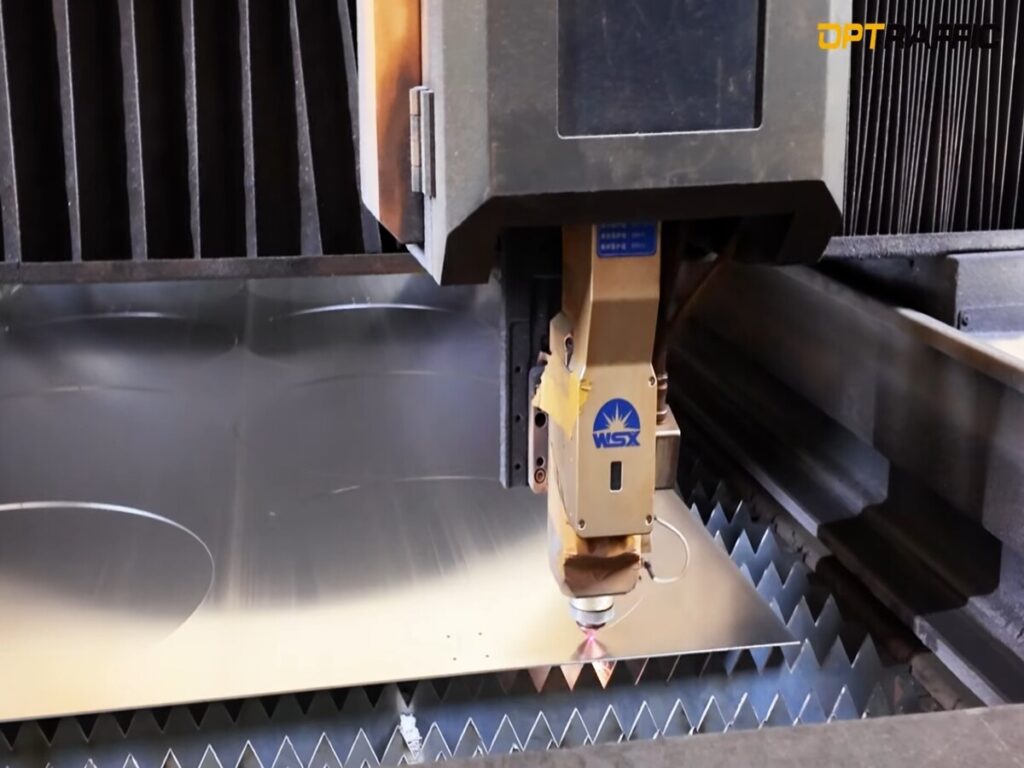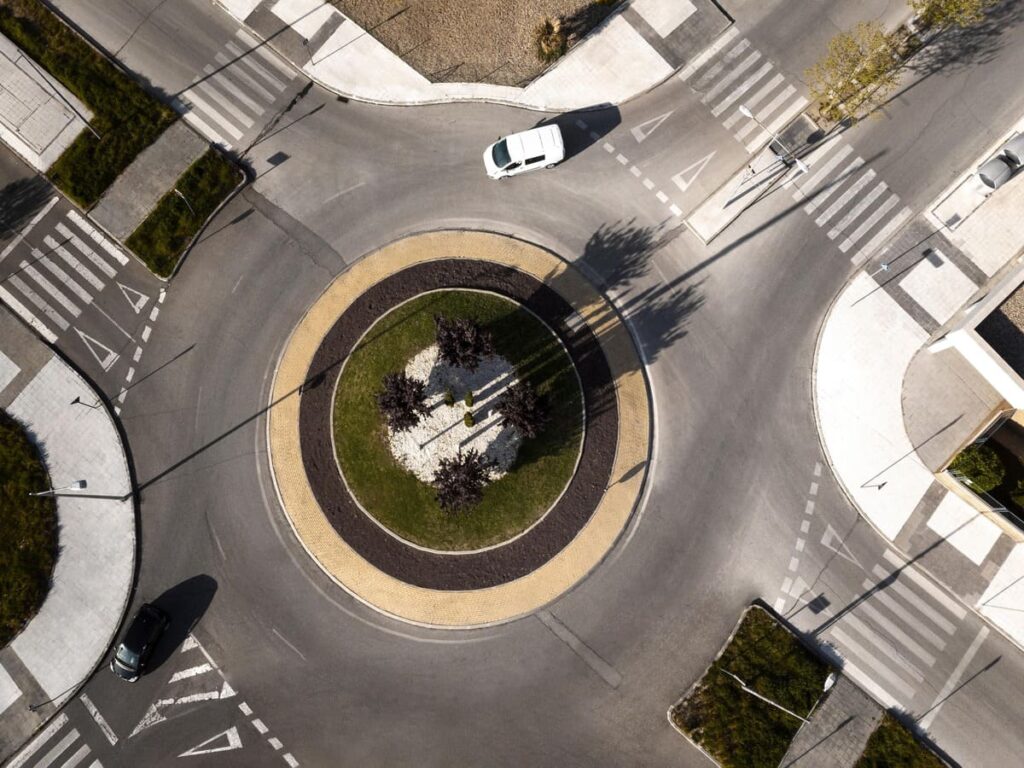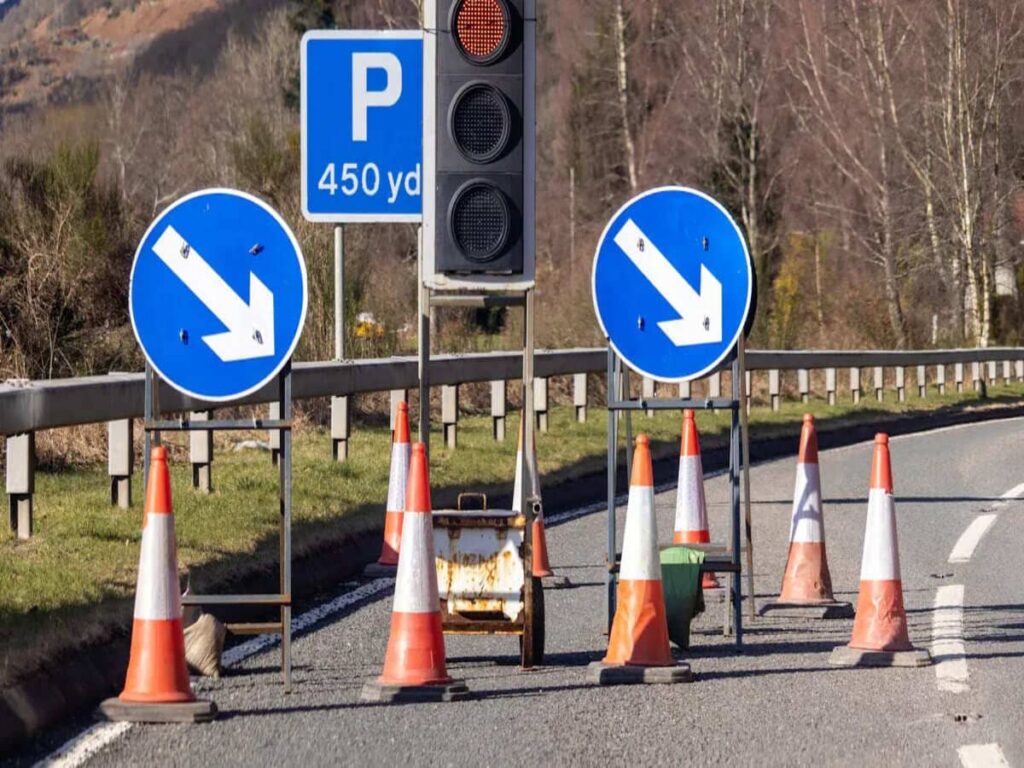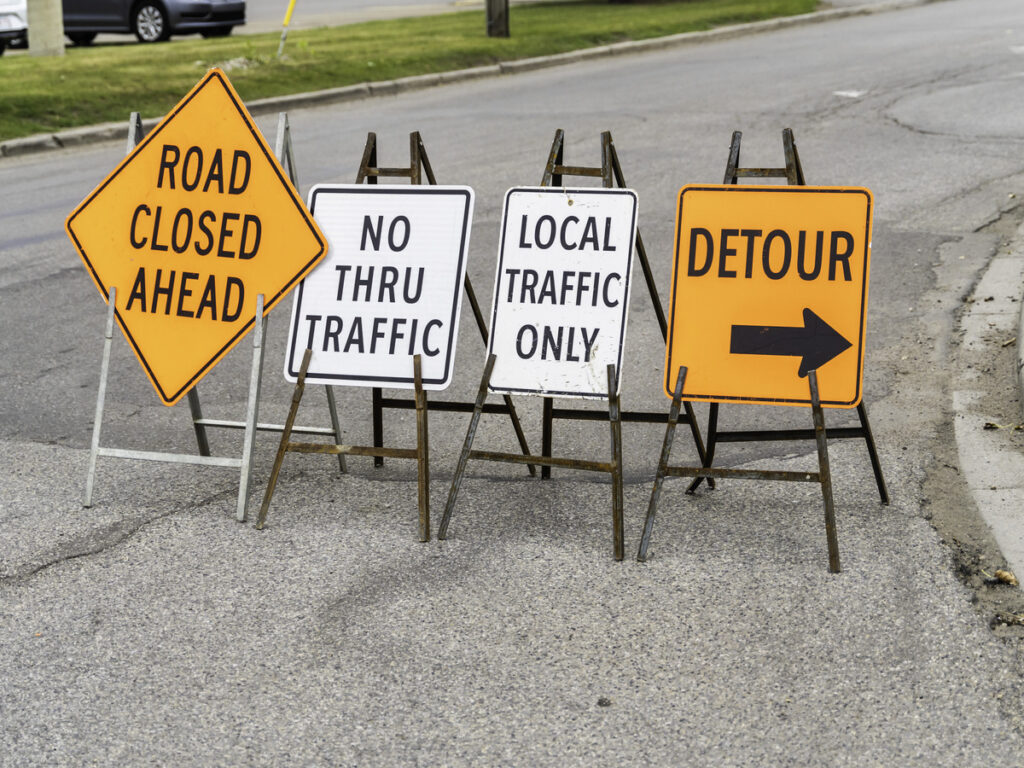
Un segnale di lavoro su strada è molto importante nelle aree di Fast City. Mettere il segnale nel posto giusto aiuta i conducenti a vedere gli avvisi in anticipo. Ciò consente loro di rallentare in sicurezza. Sulle strade dove le auto vanno più veloci di 80 km/h, il segnale dovrebbe trovarsi 200–250 metri prima dell'area di lavoro. Questo è cosa COME 1742.12:2000 dice. I team di gestione del traffico utilizzano queste regole per fermare gli incidenti e aiutare i conducenti a reagire più rapidamente. Se i segnali sono posizionati nel posto giusto, i conducenti agiscono in modo più sicuro. Mantengono velocità sicure e non cambiano corsia rapidamente. Compagnie di costruzioni, urbanisti, e gli addetti alla gestione del traffico devono tutti aiutare con buoni segnali. I buoni segnali mantengono le persone sulla strada al sicuro.
A Optraffic, siamo orgogliosi di essere il partner di fiducia delle società di costruzione australiane e del Regno Unito e dei team di gestione del traffico. I nostri lavori stradali di alta qualità Segni di sicurezza rispettare tutte le normative locali, garantendo la massima sicurezza e conformità. Esplora oggi stesso la nostra gamma di segnali stradali affidabili e durevoli per migliorare la sicurezza nei tuoi cantieri e nelle tue strade.
Importanza del posizionamento dei segnali di lavori stradali in vista
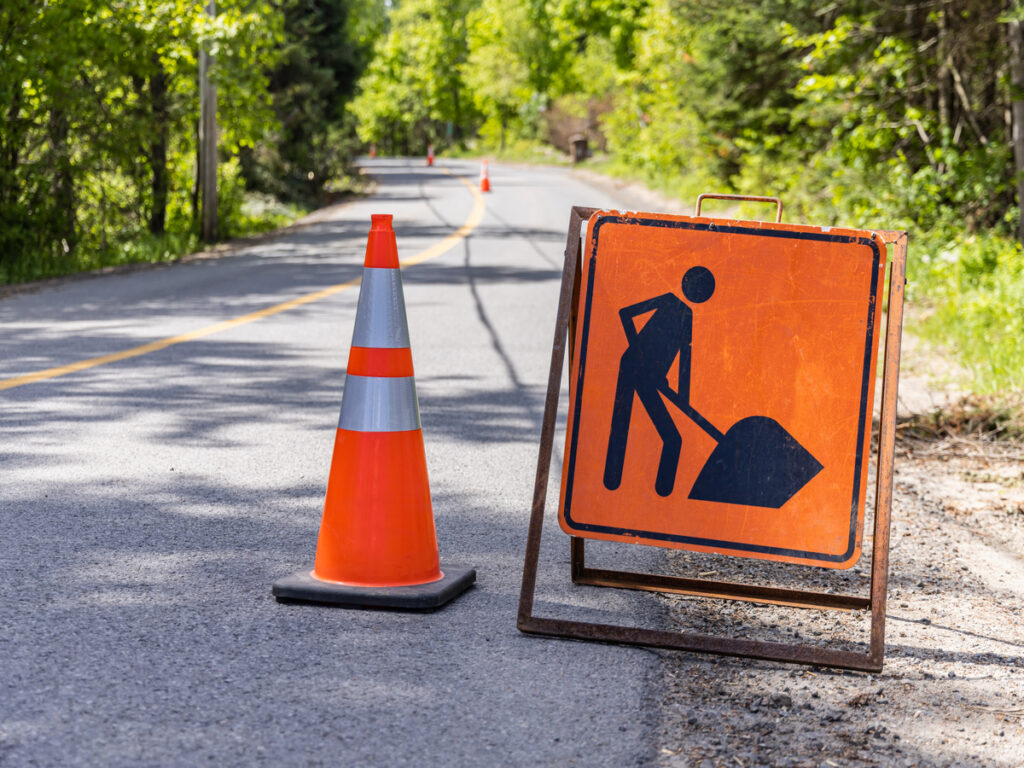
Sicurezza e consapevolezza del conducente
I segnali stradali di costruzione stradale sono molto importanti per la sicurezza nelle aree urbane veloci. Quando i conducenti vedono questi segnali stradali, hanno tempo per rallentare. Questo li aiuta a prepararsi per i cambiamenti sulla strada. I segnali consentono agli automobilisti di individuare tempestivamente i pericoli. Ciò riduce la possibilità di fermate rapide o cambi di corsia. Un buon posizionamento della segnaletica dà ai guidatori il tempo di reagire. Questo è particolarmente importante quando le auto si muovono velocemente. I conducenti che vedono i segnali possono cambiare velocità e dove guidano. Questo aiuta a evitare che si verifichino arresti anomali. Questi passaggi di sicurezza sono necessari per la sicurezza della zona di lavoro. I conducenti hanno bisogno di avvertimenti chiari per stare lontani dal pericolo. I team di gestione del traffico utilizzano questi segnali per guidare i conducenti in sicurezza. Quando i conducenti seguono le indicazioni, aiutano a mantenere i lavoratori e gli altri al sicuro. Anche i segnali di lavori stradali ricordano agli automobilisti di prestare attenzione. Dovrebbero cercare cose che non si aspettano. In città impegnate, questi segnali stradali aiutano a mantenere tutti al sicuro. Aiutano anche il traffico a muoversi bene.
Mancia: Posizionare la segnaletica alla giusta distanza dà agli automobilisti più tempo per fare scelte sicure.
Conformità legale e normativa
Gli addetti alla gestione del traffico devono seguire regole rigide per il posizionamento della segnaletica. IL Manuale sui dispositivi di controllo del traffico uniforme (MUTCD) dà queste regole. Nelle aree urbane veloci, i segnali dovrebbero essere posizionati in base al limite di velocità e al tipo di strada. Il MUTCD afferma che i segnali di pericolo dovrebbero essere da quattro a otto volte superiori al limite di velocità. Su strade veloci, i segnali più grandi con parole chiare aiutano gli automobilisti a vederli presto. Le regole di sicurezza della zona di lavoro dicono che i segnali devono essere facili da vedere e sul lato destro. Queste regole garantiscono che i conducenti abbiano il tempo di reagire e rimanere al sicuro. Se i conducenti non seguono la segnaletica di sicurezza stradale, possono ricevere multe o problemi legali. In molte zone di lavoro, le multe vengono raddoppiate per obbligare gli autisti a obbedire alla segnaletica e garantire la sicurezza dei lavoratori. Le squadre di gestione del traffico devono verificare che tutti i segnali siano conformi alla legge. Ciò aiuta a evitare multe e mantiene i conducenti al sicuro.
Distanze di posizionamento per i segnali di lavoro stradale in vista
Strade urbane ad alta velocità
I segnali stradali di costruzione stradale sono molto importanti sulle strade cittadine veloci. Mettere un segnale di lavori stradali nel punto giusto dà ai guidatori il tempo di reagire. COME 1742.12:2000 dice che i segnali dovrebbero esserlo 200 A 250 metri prima della zona di lavoro in caso di passaggio di auto 80 km/h. Questo spazio consente ai conducenti di vedere il segnale, pensaci, e cambiare velocità o corsia se necessario.
La tabella seguente mostra quanto dovrebbero essere lontani i segnali di sicurezza stradale per le diverse velocità. I numeri mostrano due cose: quando gli automobilisti devono rallentare e cambiare corsia, e quando hanno bisogno di rallentare a una velocità di consulenza.
| Velocità (km/h) | Riduzione della velocità & Cambio di corsia (M) | Decelerazione alla velocità consigliata (M) |
|---|---|---|
| 80 | 140 | 180 |
| 90 | 130 | 170 |
| 100 | 110 | 150 |
| 110 | 90 | 120 |
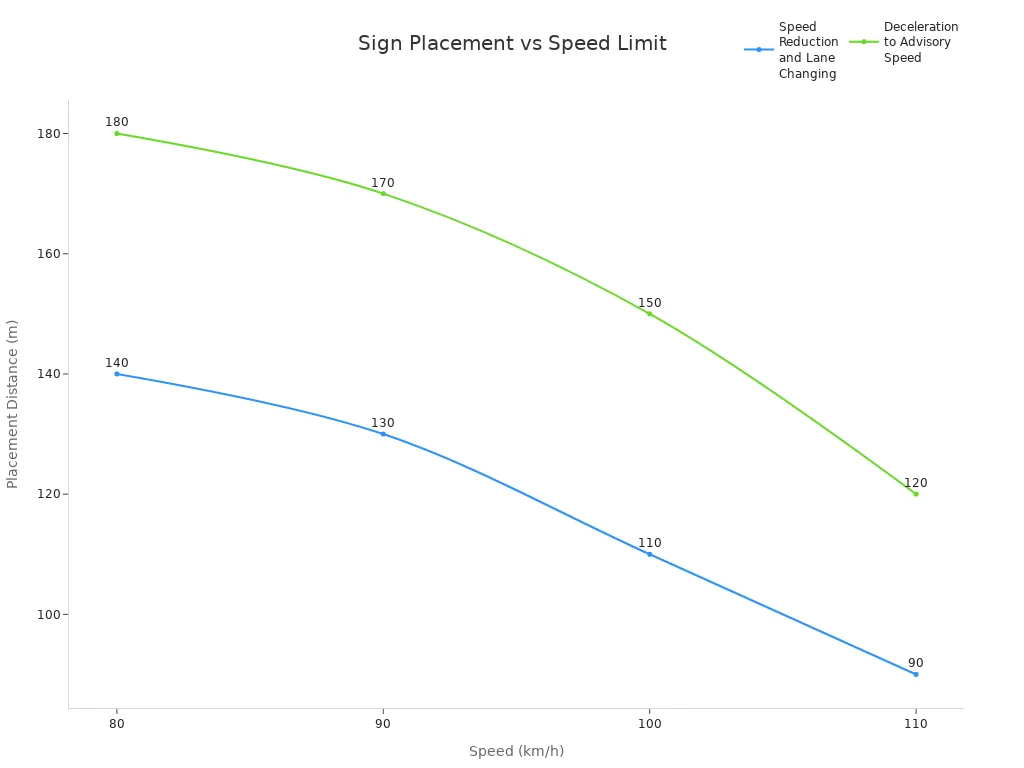
Anticipo Segnali di avvertimento deve dare ai guidatori il tempo di vedere, capire, Tatto, e decidere (PIEV). Quando le auto vanno più veloci, i conducenti hanno bisogno di più tempo per questi passaggi. Ma nelle città trafficate, i segnali non dovrebbero essere troppo lontani. Se i conducenti vedono un segnale troppo presto, potrebbero dimenticarlo a causa di altre cose che accadono. I team del traffico usano il loro giudizio per bilanciare gli avvisi tempestivi con il mantenimento dell'attenzione dei conducenti.
Nota: Un buon posizionamento della segnaletica impedisce cambi di corsia improvvisi e riduce il rischio di incidenti nel traffico veloce.
Regolazione per le caratteristiche della strada
I segnali stradali di costruzione stradale devono adattarsi alle caratteristiche speciali di ciascuna strada. Curve, colline, e gli incroci possono bloccare la visuale del conducente e rendere i segnali difficili da vedere. In questi casi, I segnali dovrebbero essere posizionati più avanti in modo che i conducenti abbiano il tempo di reagire.
- Curve e colline rendono difficile la visione, quindi i segnali devono essere più lontani dal pericolo.
- La distanza visiva è la quantità di strada che un conducente può vedere. È importante fermarsi in sicurezza e fare delle scelte.
- L'arresto della distanza visiva consente ai conducenti di vedere un pericolo e fermarsi in tempo.
- La distanza visiva decisionale offre agli automobilisti più tempo per scelte difficili, come cambiare corsia o rallentare.
- At Crowings, i triangoli a visibilità chiara aiutano i conducenti a vedere le altre auto e a rimanere al sicuro.
- Quando le curve, colline, o gli incroci rendono difficile la visione, le squadre del traffico mettono i segnali più indietro.
Anche la capacità dei conducenti di vedere i segnali è importante. Nelle città, auto parcheggiate, alberi, oppure gli edifici possono nascondere segnali. Per aiutare gli automobilisti a vedere meglio:
- Metti i segni 8 A 12 piedi di altezza in modo che i conducenti possano vedere oltre le cose.
- Usa materiali e luci lucidi in modo che i segnali siano visibili in caso di maltempo o di notte.
- Posizionare i segnali in modo che non blocchino altri segnali, luci, o percorsi per persone che camminano.
- Modificare l'altezza del segnale di lavori stradali in vista se la strada è larga o c'è molta gente che cammina.
- Collabora con gli urbanisti per trovare i posti migliori per la segnaletica per tutti.
Le squadre del traffico devono pensare a tutte queste cose per assicurarsi che tutti i segnali di lavori stradali siano chiari, avvertimenti rapidi. Un buon posizionamento dei segnali stradali mantiene gli autisti, lavoratori, e le persone camminano sicure in tutte le situazioni.
Fattori che influenzano la segnaletica stradale per la costruzione di strade
Visibilità e curvatura
La qualità della visibilità dei conducenti è molto importante per la segnaletica stradale di costruzione stradale. Gli automobilisti devono individuare tempestivamente i pericoli per restare al sicuro. Le strade curve rendono più difficile vedere i segnali. Su queste strade, gli automobilisti hanno meno tempo per notare un segnale. A volte, ne hanno solo circa 2.5 Secondi. Se le auto vanno più veloci, questa volta diventa ancora più breve. Cose come le piante, barriere, e altre auto possono bloccare i segnali. Nelle aree urbane veloci, Di 15% dei segni potrebbero essere nascosti dalle piante. Barriere e automobili possono nascondere ancora più segnali.
Le squadre del traffico devono posizionare i segnali più avanti sulle strade curve o dove gli oggetti bloccano la vista. Alzare la segnaletica o utilizzare materiali lucidi aiuta gli automobilisti a vederla meglio. In luoghi con scarsa luce o molta nebbia, i segnali luminosi o lucenti aiutano i conducenti a vedere gli avvertimenti in tempo. Questi passaggi aiutano a prevenire gli errori e a mantenere sicure le zone di lavoro.
Nota: Le strade cittadine curve hanno più incidenti perché i segnali sono difficili da vedere. Mettere i segnali in anticipo e utilizzare materiali chiari aiuta i conducenti a rimanere al sicuro.
Volume e velocità del traffico
Le strade trafficate con molte auto e velocità elevate richiedono un'attenta pianificazione della segnaletica. Le strade cittadine spesso hanno molte macchine e persone che camminano. I conducenti hanno bisogno di più attenzione per rallentare e muoversi in sicurezza. Quando le auto vanno veloci, i segnali devono essere posti più avanti. Ciò dà ai conducenti il tempo di reagire ai pericoli.
Le squadre del traffico utilizzano spesso segnali portatili o elettronici nei luoghi affollati. Questi segnali danno aggiornamenti e possono essere visti nel traffico intenso. Cambiare gli orari dei segnali e posizionare i segnali stradali agli incroci trafficati aiuta il traffico a muoversi e impedisce la confusione. Dove camminano molte persone, i segnali devono essere facilmente visibili sia dai conducenti che dai pedoni.
- Principali cose che influenzano la direzione dei segnali:
- Terreni e colline
- Tempo e luce
- Quanto è occupata la strada
- Regole per la segnaletica
- Persone che camminano nelle città
- Utilizzando materiali lucidi e resistenti
Pensando a queste cose, le squadre stradali aiutano gli autisti ad attraversare le zone di lavoro in sicurezza.
Adattamento alle zone di costruzione di strade urbane
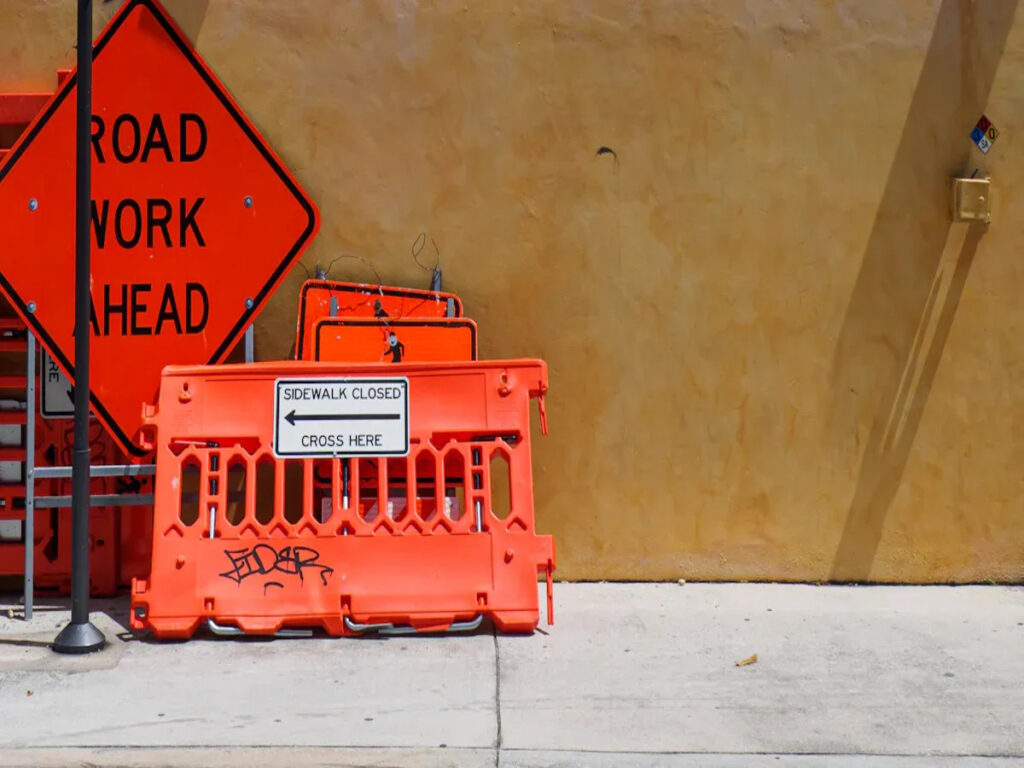
Strette strade e incroci
Le città hanno spesso piccole strade e molti incroci. Ciò rende il lavoro stradale più difficile per tutti. I conducenti hanno meno spazio per vedere e reagire ai segnali. Anche le persone che camminano e vanno in bicicletta utilizzano queste strade. I segnali devono essere affissi dove tutti possano vederli. I segnali dovrebbero essere più alti delle auto parcheggiate e delle panchine. Le squadre utilizzano segnali più piccoli o tribune in spazi ristretti. Mettere i segnali appena prima degli incroci aiuta gli automobilisti a prepararsi. Le squadre non devono bloccare i percorsi o le piste ciclabili con segnaletica. La vernice trasparente sulla strada può aiutare a mostrare il messaggio del segnale.
Mancia: Sulle strade trafficate della città, mettere più segnali in ogni direzione di un incrocio. Questo aiuta tutti a vedere l'avviso.
Gestione di zone di lavoro complesse
Alcuni lavori stradali in città coprono molti isolati o presentano molti gradini. Queste aree potrebbero avere cambi di corsia, deviazioni, o nuovi attraversamenti. Le squadre devono pianificare dove posizionare i segnali per ogni passaggio. La segnaletica dovrebbe aiutare gli automobilisti ad ogni cambiamento sulla strada. In aree difficili, utilizzare segnali di avvertimento in ogni ingresso. Metti spesso dei cartelli per ricordare agli autisti il lavoro da svolgere. Le schede elettroniche aiutano quando le cose cambiano molto. Le squadre devono verificare che la segnaletica sia sempre visibile durante il lavoro. Il controllo spesso impedisce che la segnaletica venga nascosta da macchine o nuove barriere.
Una semplice lista di controllo per i lavori stradali in città:
- Mettere la segnaletica prima di ogni incrocio e ingresso.
- Controlla l'altezza del segnale in modo che le persone possano vedere oltre le cose.
- Utilizzare più segnali per le persone che camminano e vanno in bicicletta.
- Spostare i segnali man mano che l'area di lavoro cambia.
Guida pratica per la segnaletica stradale di costruzione stradale
Lista di controllo del posizionamento
Un piano passo passo aiuta i team a posizionare i segnali stradali di costruzione stradale nel modo giusto. Ciò garantisce che i conducenti ricevano avvisi chiari e rimangano al sicuro. Le squadre dovrebbero fare queste cose per un buon posizionamento dei segnali:
- Controlla che tipo di strada è e quanto velocemente vanno le auto. Sulle strade cittadine con velocità di 40–60 km/h, posizionare i segnali 50–100 metri prima della zona di lavoro. Per strade di periferia con velocità di 60–80 km/h, mettere i segnali 100-200 metri più avanti. Sulle autostrade dove passano le auto 80 km/h, posizionare i segnali a 200–300 metri prima dell'area di lavoro.
- Scegli il segno giusto per quanto tempo durerà il lavoro. Utilizza i cartelli in vinile avvolgibili per lavori brevi. Utilizzare i segnali in alluminio per i lavori che richiedono più tempo.
- Metti i segnali in modo che il fondo sia 1–2 metri sopra la strada. Questo aiuta i conducenti a vederli meglio.
- Girare leggermente le indicazioni verso le auto in arrivo. Questo li rende più facili da vedere, soprattutto quando il sole è basso.
- Usa materiali lucidi e luci lampeggianti di notte o quando è buio.
- Utilizzare pali forti per segnali che durano a lungo. Nei piccoli spazi cittadini, utilizzare supporti o supporti a cono.
- Pulisci spesso i cartelli in alluminio in modo che siano facili da vedere.
- Non mettere insieme troppi segnali. Utilizza solo la segnaletica realmente necessaria per evitare che gli automobilisti si confondano.
- Posizionare segnali di avvertimento su entrambi i lati delle strade con molte corsie. Mantieni uno spazio sufficiente tra i segnali come dicono le regole.
- Controlla spesso i segnali stradali per assicurarti che non siano bloccati o rotti.
Mancia: Assicurarsi sempre che i segnali non blocchino i percorsi per le persone che camminano o vanno in bicicletta. Tutti i messaggi dovrebbero essere facili da leggere e uguali ovunque.
Conformità continua
Per seguire le regole, le squadre devono prestare sempre attenzione alla segnaletica. Clean road construction traffic signs at least once a month so they stay shiny. Test how well signs reflect light every three to six months, especially if the job takes more than six months. Turn signs around halfway through long jobs to stop sun damage. Teams need to check for damage from people and cut back plants that might hide signs. If the job lasts more than a year, change the signs in the middle of the project. Doing these things helps teams follow the rules for where and how to put signs. It also keeps everyone on the road safe.
Nota: Checking signs and cleaning them often stops problems like faded signs or signs that are hard to see. This helps keep everyone safe on fast city roads.
- Il segnale di lavori stradali in vista sulle strade cittadine a scorrimento veloce dovrebbe trovarsi 200–250 metri prima del pericolo. La segnaletica stradale deve essere ben visibile e posizionata alla giusta altezza.
- Le squadre devono cambiare il punto in cui mettono i segnali per le curve, cose in mezzo, e quanto vanno veloci le auto. Devono seguire AS 1742.12:2000 e le ultime regole.
- Controllare e correggere i segnali spesso aiuta a evitare confusione e riduce il rischio di incidenti. Questo mantiene le strade più sicure per tutti.
Lezioni continue e nuove guide aiutano i lavoratori a utilizzare i metodi migliori. Ciò mantiene le zone di lavoro cittadine sicure e rispetta le regole.
Domande frequenti
Con quanto anticipo le squadre dovrebbero posizionare i segnali di lavori stradali sulle strade urbane ad alta velocità??
Le squadre dovrebbero posizionare i segnali stradali davanti a loro 200-250 metri prima della zona di lavoro su strade a velocità eccessiva 80 km/h. Questa distanza offre ai conducenti abbastanza tempo per reagire e adattarsi in sicurezza.
Quali fattori possono modificare la distanza consigliata per il posizionamento dei segnali stradali da realizzare?
Visibilità, curvatura stradale, velocità del traffico, e gli ostacoli possono influenzare il posizionamento. Le squadre potrebbero dover spostare i segnali più indietro se i conducenti non riescono a vederli chiaramente a causa delle curve, colline, o veicoli parcheggiati.
Per ulteriori approfondimenti sul corretto posizionamento dei segnali e sugli errori comuni da evitare, Dai un'occhiata al nostro blog, Errori comuni nel posizionamento dei segni di costruzione e come ripararli.
Le squadre devono modificare il posizionamento dei segnali per la notte o il maltempo?
SÌ. Le squadre dovrebbero usare Materiali riflettenti e potrebbero posizionare i segnali più vicini tra loro in condizioni di scarsa illuminazione o nebbia. Ciò garantisce che i conducenti visualizzino gli avvisi in anticipo, anche in condizioni difficili.
Esistono regole specifiche per il posizionamento della segnaletica in Australia?
COME 1742.12:2000 stabilisce le regole principali per il posizionamento della segnaletica in Australia. I team devono seguire questi standard per garantire la conformità legale e massimizzare la sicurezza in tutte le zone di lavoro.
Con quale frequenza le squadre dovrebbero controllare e mantenere la segnaletica dei lavori stradali?
Le squadre dovrebbero ispezionare regolarmente la segnaletica, almeno una volta al mese. Devono pulire, riparazione, o sostituire eventuali segnali danneggiati o sbiaditi per mantenere gli avvertimenti chiari e visibili a tutti gli utenti della strada.

